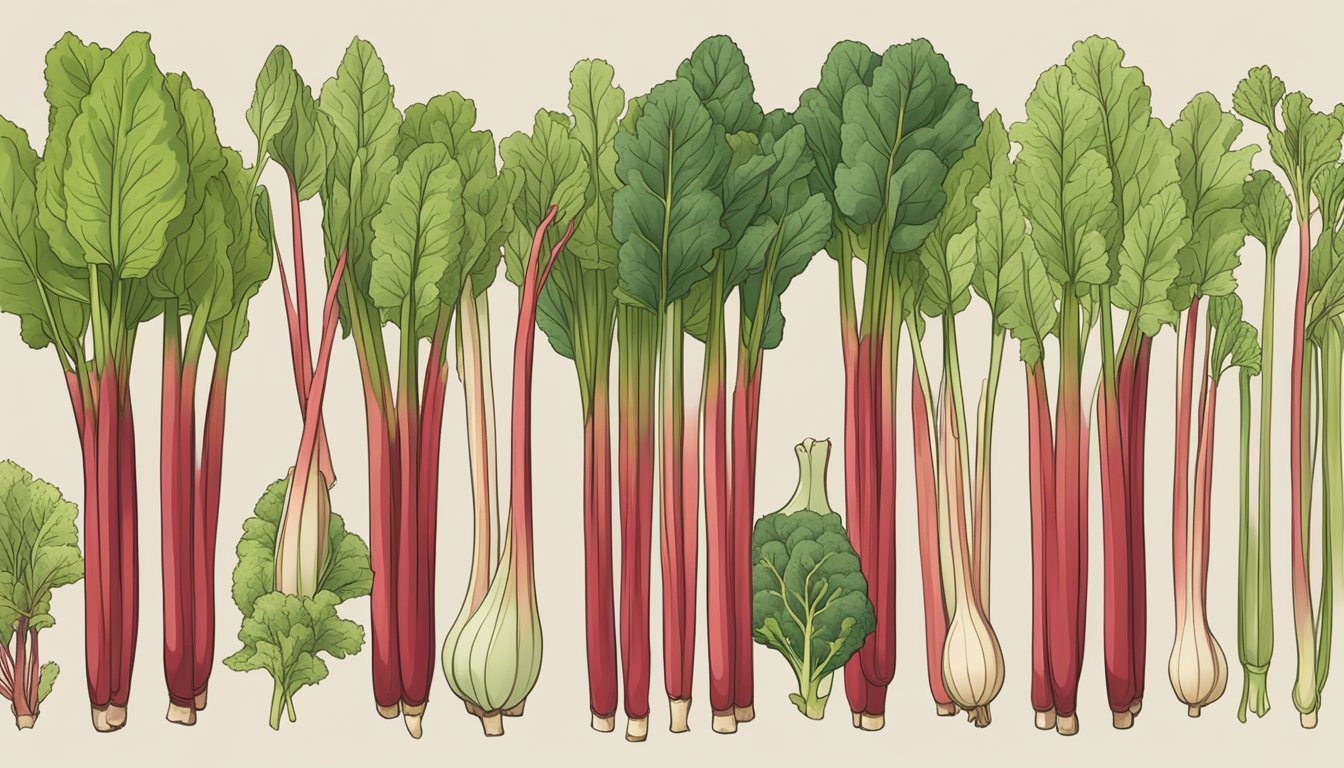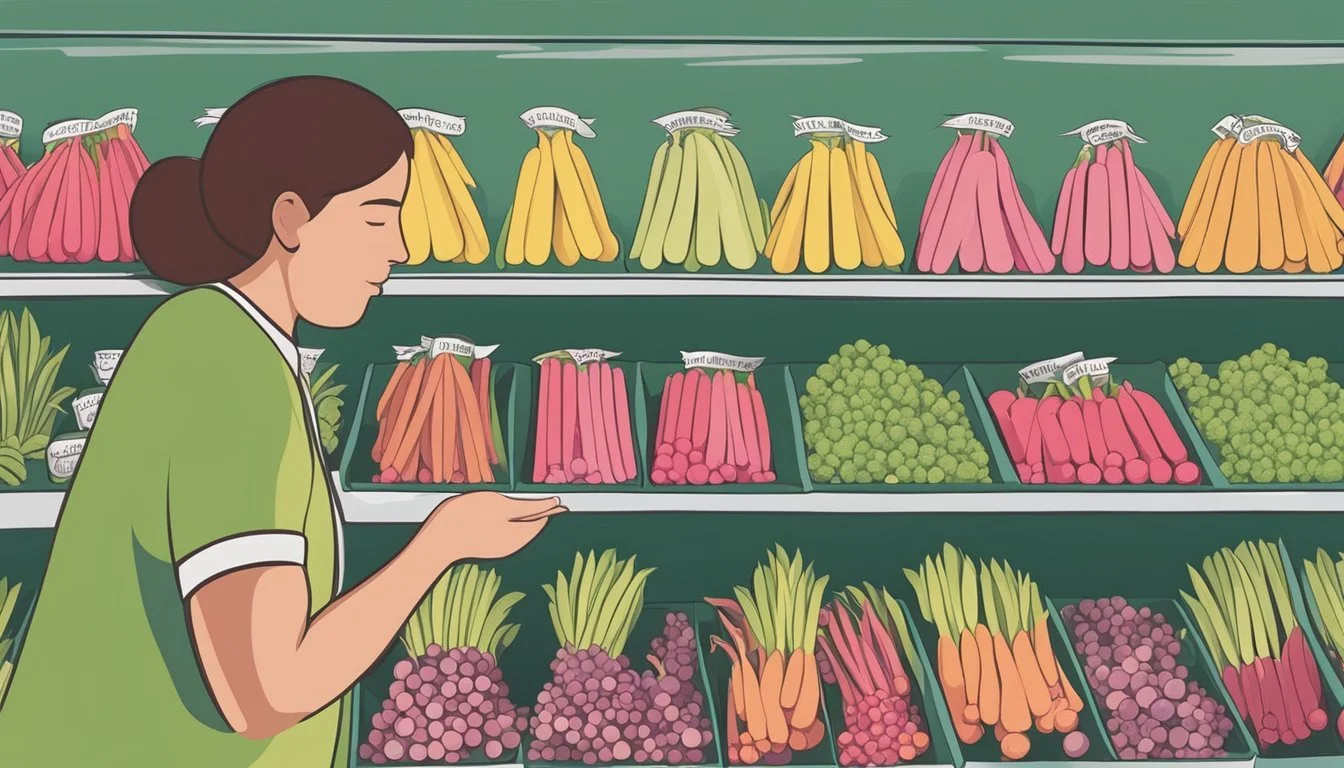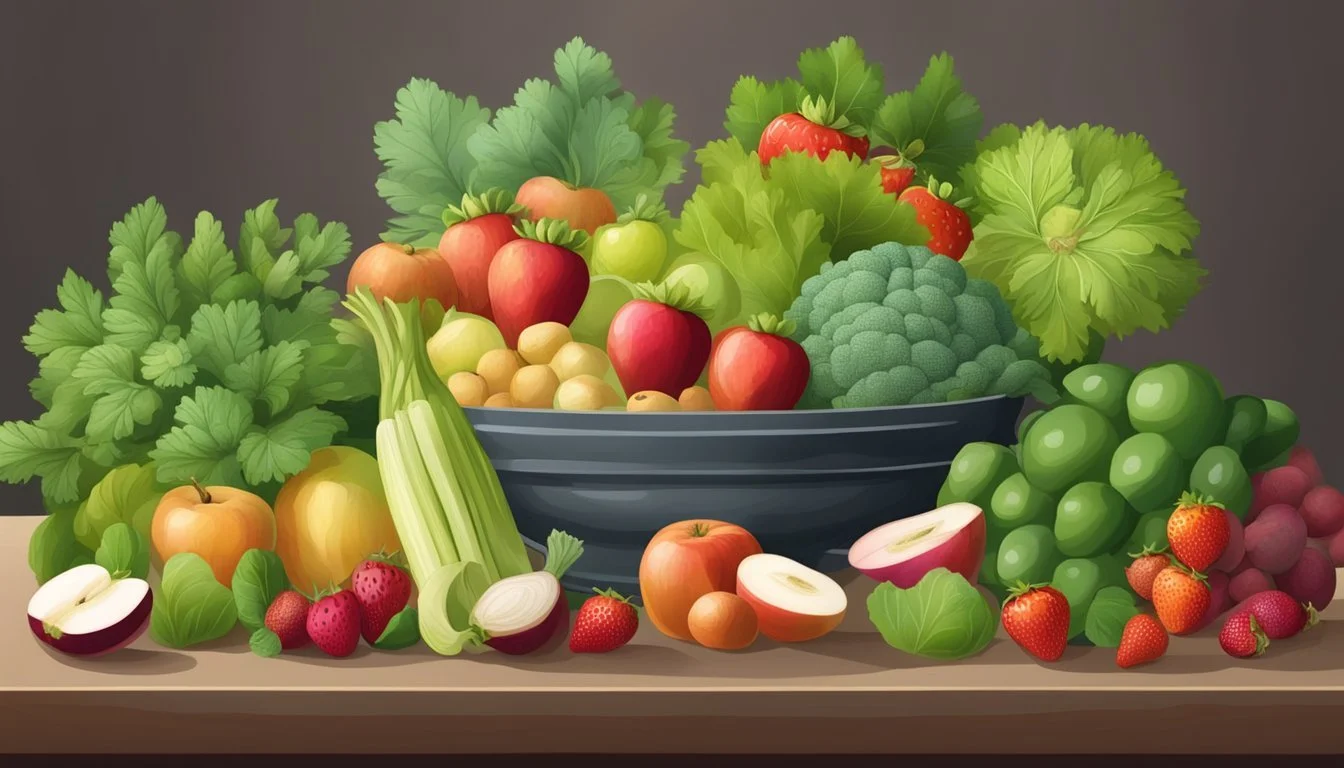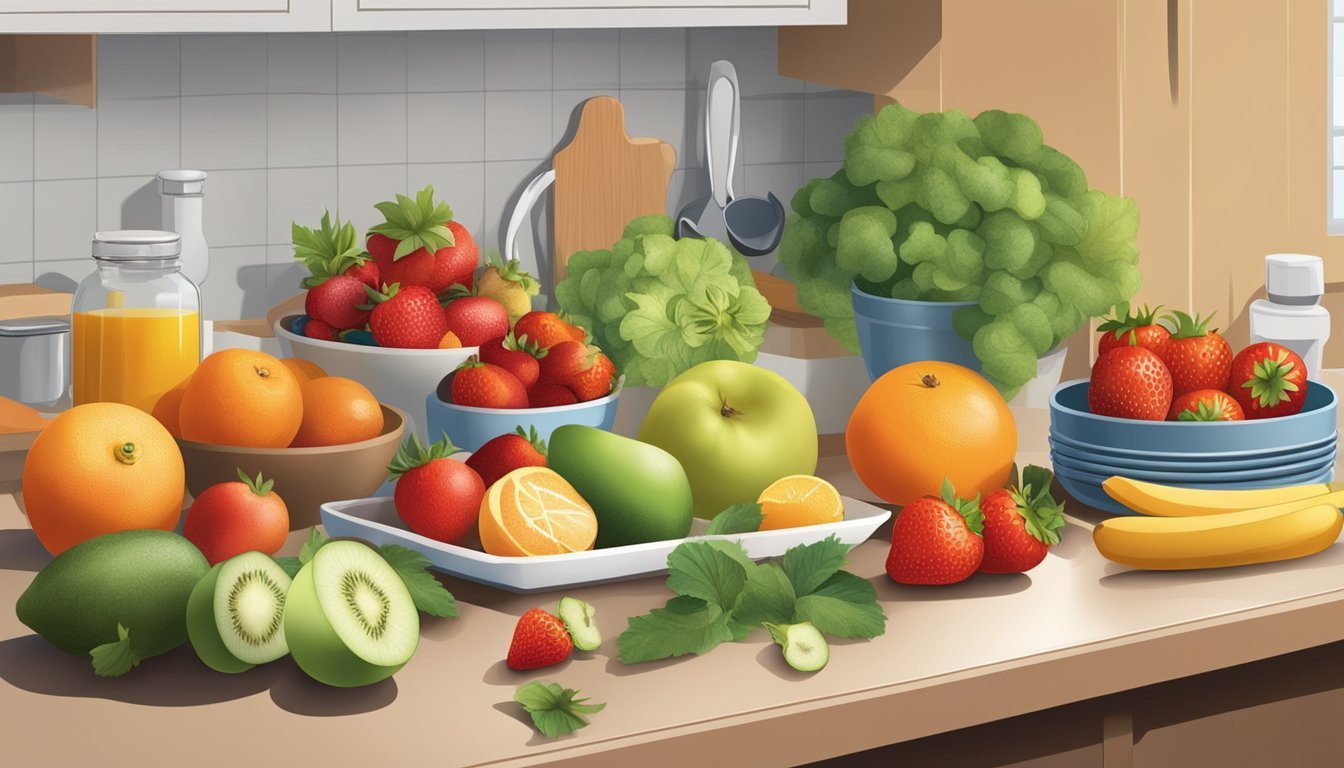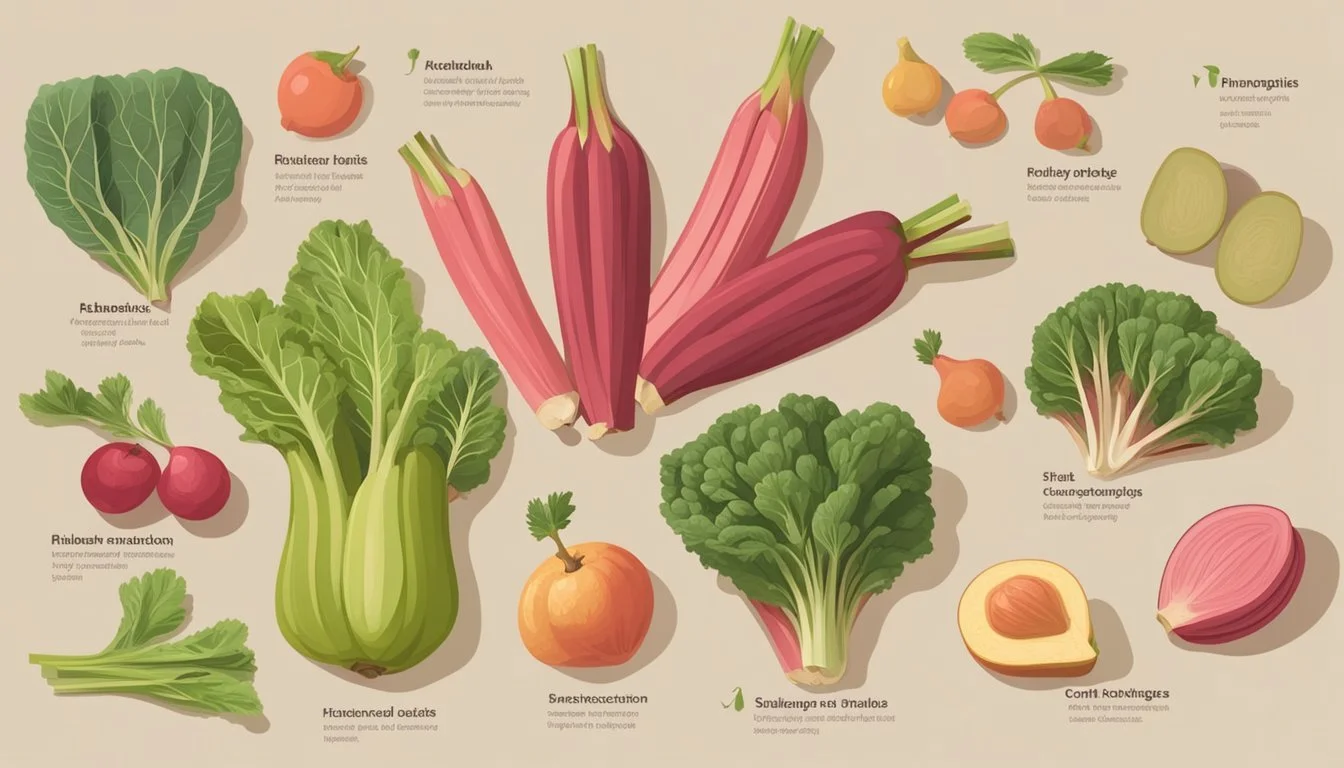Rhubarb Substitutes
Top Alternatives for Your Recipes
Rhubarb, known for its tart and slightly sweet flavor, has long been a staple in pies, jams, and desserts. However, its seasonal nature and distinctive taste may necessitate a search for substitutes that can mimic its qualities in recipes. When rhubarb is not available or if someone is looking for a variation, there are several suitable replacements that can provide a similar flavor profile and texture.
Common substitutions for rhubarb include fruits that offer a balance of tartness and sweetness. Cranberries, sour cherries, and tart apples stand out as some of the top alternatives. These fruits can be used in cooking and baking to achieve the desired acidity and bright flavors associated with rhubarb. Each alternative brings its own unique attributes to dishes, allowing culinarians to experiment with different ingredients while maintaining the integrity of the recipes they are adapting.
Overview of Rhubarb
Rhubarb is a unique vegetable known for its tart flavor and brightly colored stalks, which range from green to deep red. A culinary favorite, often sweetened and used in desserts like pies and crumbles, rhubarb offers more than just a unique taste profile.
Nutritionally, rhubarb is low in calories and offers a host of health benefits. It is a significant source of fiber, which aids in digestion, and contains several vitamins and minerals that contribute to overall health.
Nutritional Profile
Rhubarb is rich in vitamin C, an essential nutrient for the immune system, and skin health. It also supplies vitamin K1, critical for bone health and blood clotting. Additionally, the stalks are a good source of vitamin A with its antioxidant properties that support eye health.
In terms of minerals, rhubarb provides calcium and potassium, both important for cardiovascular health and muscle function. Here is a quick glimpse of rhubarb's nutritional content:
Nutrient Benefit Fiber Promotes digestive health Vitamin C Supports the immune system Vitamin K1 Important for bone health Calcium Necessary for strong bones Potassium Helps regulate blood pressure Antioxidants Combat oxidative stress
Notably, along with its antioxidants, rhubarb contains various compounds that may offer protective effects against certain health issues. However, it's important to note that while rhubarb has many positives, its leaves are toxic and should never be eaten due to the presence of oxalic acid. As a vegetable that poses a complex flavor profile, rhubarb is not only significant in culinary uses but also as a beneficial addition to a balanced diet.
Common Uses of Rhubarb
Rhubarb is a versatile ingredient notable for its tart flavor, making it a popular choice in a variety of culinary applications. When sweetened with sugar, its flavor brightens, complementing many dishes, from sweet to savory.
Rhubarb in Desserts
Pies and Tarts: Rhubarb is perhaps best known for its role in desserts. It's commonly paired with sweeteners and other fruits like strawberries in pies and tarts. The addition of sugar balances rhubarb's natural tartness, while its firm texture allows it to hold up well during the baking process.
Compotes and Sauces: Cooks often transform rhubarb into compotes or sauces. These can be served as accompaniments to desserts, such as cheesecakes or ice cream. The tanginess of rhubarb compote or sauce provides a delightful contrast to the richness of its dessert pairings.
Rhubarb in Jams and Preserves
Rhubarb Jam: Rhubarb is a popular ingredient in jams and preserves, where it's typically cooked down with sugar. The resulting rhubarb jam has a unique tart-sweet profile that is excellent on toast, incorporated into yogurt, or used as a pastry filling.
Rhubarb in Savory Dishes
Rhubarb isn't limited to sweet applications; it can also be incorporated into savory dishes. When diced, it can be added to chutneys and used alongside meats, lending a tart counterpoint that enhances the overall flavor profile of a meal.
Traditional Rhubarb Recipes
In traditional recipes, rhubarb frequently appears as a seasonal staple in regions where it grows abundantly. These preparations often aim to showcase the flavor of rhubarb in its purest form, with minimal ingredients to highlight its characteristic sourness and subtle sweetness after cooking. Classic preparations include stewed rhubarb often sweetened with sugar, often enjoyed as a simple dessert on its own or as a topping for puddings and cereals.
Rhubarb Substitutes
When a recipe calls for rhubarb and it's unavailable, there are several fruit and vegetable-based alternatives that can provide a similar tartness and texture to dishes.
Fruit-Based Substitutes
Strawberries with Lemon: Strawberries combined with lemon juice offer a balance of sweetness and tartness, making them a popular replacement for rhubarb. They work particularly well in desserts where a bright, fruity flavor is desired.
Cranberries: These tart berries can replicate rhubarb's acidity and are best sweetened to reduce bitterness.
Raspberries: With a naturally tart flavor, raspberries are suitable for most recipes requiring rhubarb.
Apples: Specifically, tart apples are recommended to mimic the texture of rhubarb in cooked dishes.
Sour Cherries: These cherries provide a similar tartness and can be used in pies and jams.
Quinces: Not as common, quinces have a tartness and floral aroma that can serve as a rhubarb alternative when cooked down.
Each fruit substitute brings unique nuances to a recipe, allowing for versatility in flavor profiles. Adding lemon juice or zest to some of these fruits can enhance their tartness, making them closer in taste to rhubarb.
Vegetable-Based Substitutes
In contrast, vegetable-based substitutes for rhubarb are not as commonly suggested due to rhubarb's unique flavor which is more akin to fruits in culinary use, even though botanically it is a vegetable. However, citrus and pomelo fruits, with their tangy and slightly bitter taste, serve as creative savories. They can replace rhubarb in chutneys and sauces, complementing rich, fatty meats with a refreshing zing.
Use acidic fruits like cranberries or citrus to bring out a sharper taste, while apples and quinces can be stewed to match the soft, fibrous texture of rhubarb in pies and crumbles. Sour cherries help in achieving the distinctive color and tang similar to that of rhubarb. It's important to keep in mind the sweetness of these substitutes and adjust sugar amounts in recipes accordingly.
Selecting the Best Substitute
When a recipe calls for rhubarb and it's unavailable, one must consider both the taste and texture that rhubarb adds to a dish to choose an effective substitute. Rhubarb is known for its tartness and slight bitterness, accompanied by a fibrous texture. Substitutes should mimic these characteristics to uphold the integrity of the original recipe.
Tartness and Acidity: A key aspect of rhubarb is its acidic bite. Substitutes like cranberries or sour cherries can provide a similar tartness. If opting for cranberries, they suggest balancing the tartness with additional sweetness.
Cranberries: Tart and somewhat sour, pair with extra sugar.
Sour cherries: Tart and provide a different but pleasant flavor profile.
Sweetness: While rhubarb has a tart profile, it often requires sweetening. Substitutes such as strawberries with citrus (lemon or lime juice) can offer a balance of sweet and tart.
Strawberries with citrus: Sweet with an added acidic kick from citrus.
Texture and Flavor Profile: When it comes to texture, fibrous substitutes like tart apples or quinces can be used. They maintain a form similar to rhubarb when cooked.
Tart apples: Firm texture with natural tartness.
Quinces: Dense and fragrant, they add a unique flavor.
Overall Taste: Ensure that the chosen substitute complements the other ingredients in the recipe. Each suggested substitute brings a unique blend of tartness, acidity, and sweetness, closely mirroring the complex flavor profile of rhubarb.
Here's a quick reference for the best rhubarb substitutes based on their characteristics:
Substitute Taste Profile Use When Cranberries Tart and sour Additional sugar needed Strawberries with citrus Balanced sweet-tart Lighter acidity preferred Tart apples Crisp and tangy Texture is a priority Quinces Tart and aromatic Unique flavor desired Sour cherries Tart Closest matching profile
Selecting the best match depends on the dish's requirements. The ideal substitute will have a congruent flavor and texture, ensuring a delightful outcome in the absence of rhubarb.
Preparing Substitutes
When cooking with rhubarb substitutes, it's essential to consider the unique flavors and textures of your alternatives. Each substitute will contribute its own distinct taste to the dish, providing an interesting twist on the classic rhubarb flavor profile.
Strawberries and Citrus: Strawberries can mimic rhubarb's fruitiness when paired with lemon juice or zest to add necessary tartness. For every cup of rhubarb, one can use a cup of sliced strawberries mixed with a tablespoon of lemon juice.
Substitute Prep Method Note Strawberries + Citrus Mix strawberries with lemon juice or zest. Adjust sweetness with sugar if needed. Cranberries Use fresh or frozen; increase sugar. Can be used whole or as a sauce or preserves. Tart Cherries Pit and use whole or create cherry preserves. Their natural tartness is closer to rhubarb's.
Cranberries: This tart fruit can be used fresh, frozen, or in the form of cranberry sauce. Cranberries might require additional sugar to balance their natural tartness. They work well for sauces and preserves where rhubarb would typically be present.
Tart Apples: Substitute with equal amounts, peeling and dicing beforehand. They offer a pleasing tartness that resembles rhubarb and work well in cooked dishes. A splash of lemon juice can enhance their tart flavor.
Using these substitutes will require adjusting the amount of sugar used in the recipe. Tart substitutes like cranberries may need more sugar, while sweeter options like apples would need less. The cook should taste as they go, adding sugar in small increments until the desired sweetness is achieved. This will ensure that the final dish maintains a balanced flavor profile that complements the substitute being used.
Health Considerations
When considering health and nutritional value in selecting a substitute for rhubarb, one should be aware of the different nutritional profiles that alternatives may offer. For instance, rhubarb is low in calories and contains a notable amount of dietary fiber, which aids in digestion. Rhubarb also provides vitamins C and K, along with calcium and potassium.
The substitutes, like strawberries and cranberries, bring their own mix of vitamins and nutritional benefits. Strawberries, for instance, are a rich source of vitamin C and manganese and also contain a fair amount of folate (vitamin B9) and potassium. Cranberries, on the other hand, are well-known for their vitamin C content and are believed to have infection-fighting properties.
Substitute Notable Nutrients Calories (per 100g) Oxalic Acid Strawberries Vitamin C, Manganese 32 Low Cranberries Vitamin C, Fiber 46 Moderate Rhubarb Vitamin K, Calcium 21 High
One must also consider the presence of oxalic acid, particularly in rhubarb, which may pose a risk to individuals with certain health conditions, such as kidney stones. Rhubarb contains a higher concentration of oxalic acid, which can affect mineral absorption. Cooking usually reduces the oxalic acid content in these foods. Substitutes like strawberries and cranberries have lower levels of oxalic acid compared to rhubarb, making them potentially safer options for those concerned about this compound.
In conclusion, when replacing rhubarb, one should not only consider the flavor profile but also the health impacts of the substitutes. Each option carries individual nutritional benefits and potential considerations. It is recommended to evaluate these factors based on dietary needs and health objectives.
Culinary Tips
When looking for rhubarb substitutes, one should be aware of the distinct tart flavor and texture that rhubarb brings to dishes. It is traditionally found in recipes for pies, crumbles, cakes, and muffins. When selecting alternatives, consider the desired outcome in terms of flavor and consistency.
Freshness: Acquiring alternatives at peak quality is similar to finding fresh rhubarb stalks at a farmers’ market or grocery store. One should ensure any fruit used is ripe and flavorful.
Texture Matters: Some recipes like crumbles rely on the fibrous texture of the stalks. For such textures:
Cranberries: Provide a tartness similar to rhubarb; use them whole in muffins or cakes.
Green Apples: They can be a substitute, especially when diced for a satisfying crunch.
Flavor Pairings:
Strawberries with Citrus: The sweetness of strawberries combined with a spritz of lemon or lime can mimic rhubarb’s tanginess.
Sour Cherries: Their natural tartness makes them a solid choice, especially in pies or crumbles.
Cooking Adjustments: One might need to alter the sugar content when substituting, as fruits like cranberries might be more tart than rhubarb.
Substitute Best For Note Strawberries Jams, Cakes Add citrus to enhance tartness Cranberries Muffins, Sauces Increase sweetness as needed Tart Apples Crumbles, Pies Cook until tender but not mushy Raspberries Fillings, Toppings Blend with other fruits for balance Sour Cherries Everything Rhubarb is Traditionally Used May need to reduce the added sugar
In summary, while one may miss the unique qualities of rhubarb, a knowledgeable cook can confidently use these substitutes to maintain the integrity of the dish's flavor and texture profile.
Frequently Asked Questions
What are the best substitutes for rhubarb in recipes?
Strawberries with a splash of citrus (usually lemon juice) for a similar tartness.
Cranberries, due to their tart and slightly sour flavor, which closely resembles rhubarb's tanginess.
Quinces, which provide a similar texture and acidity.
Tart apples, offering a crunchy texture and a balance between sweet and sour.
Raspberries that lend a tart flavor, yet with a different texture.
Sour cherries for a similar color profile and tartness.
How do cranberries compare to rhubarb in terms of taste?
Cranberries are tart and slightly sour, similar to the tangy profile of rhubarb. They also have a rich red color that can visually substitute for rhubarb in dishes.
Can strawberries effectively replace rhubarb in recipes?
Yes, strawberries can be used as a substitute, especially when combined with citrus to enhance tartness. It's best to use them in an equal amount to the rhubarb required in the recipe.
Is it necessary to adjust sugar levels when using substitutes?
It often depends on the substitute:
With cranberries, which are more tart than rhubarb, one might need to add more sugar.
With strawberries and apples, which are naturally sweeter, less sugar might be sufficient.
What texture differences should one expect with these substitutes?
Substitutes like apples and quinces maintain a firm texture, similar to rhubarb. Berries, on the contrary, tend to be softer and may create a different mouthfeel in the finished dish.
Conclusion
In the quest for suitable rhubarb substitutes, several alternatives have been identified, each bringing a unique dimension to recipes commonly featuring rhubarb. It should be noted that the ideal substitute often depends on the specific qualities one wishes to replicate—be it tartness, texture, or color.
Top Rhubarb Substitute Options:
Cranberries: They offer a similar tartness and vibrant red hue, perfect for pies and compotes.
Sour Cherries: The tart profile closely matches rhubarb, suitable for desserts.
Tart Apples: A readily available ingredient providing similar texture and sourness to dishes.
Quinces: Their fragrant and tart nature can mimic rhubarb's acidity.
Raspberries: With a balance of sweet and tart, raspberries can serve as a rhubarb stand-in.
Strawberries with Citrus: Adding lemon to strawberries achieves a comparable tartness.
When selecting an alternative for rhubarb, chefs should consider the desired outcome in flavor, texture, and visual appeal. Each substitute may require adjustments in recipe preparation, specifically concerning the amount used and additional sweetening or tart elements.
The use of these substitutes provides an avenue for culinary experimentation and offers a solution for those unable to source rhubarb. While the original attributes of rhubarb are unique, these alternatives can suffice in delivering a comparable sensory experience in cooking and baking endeavors.


